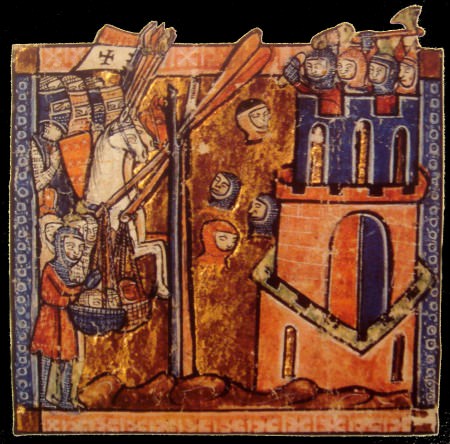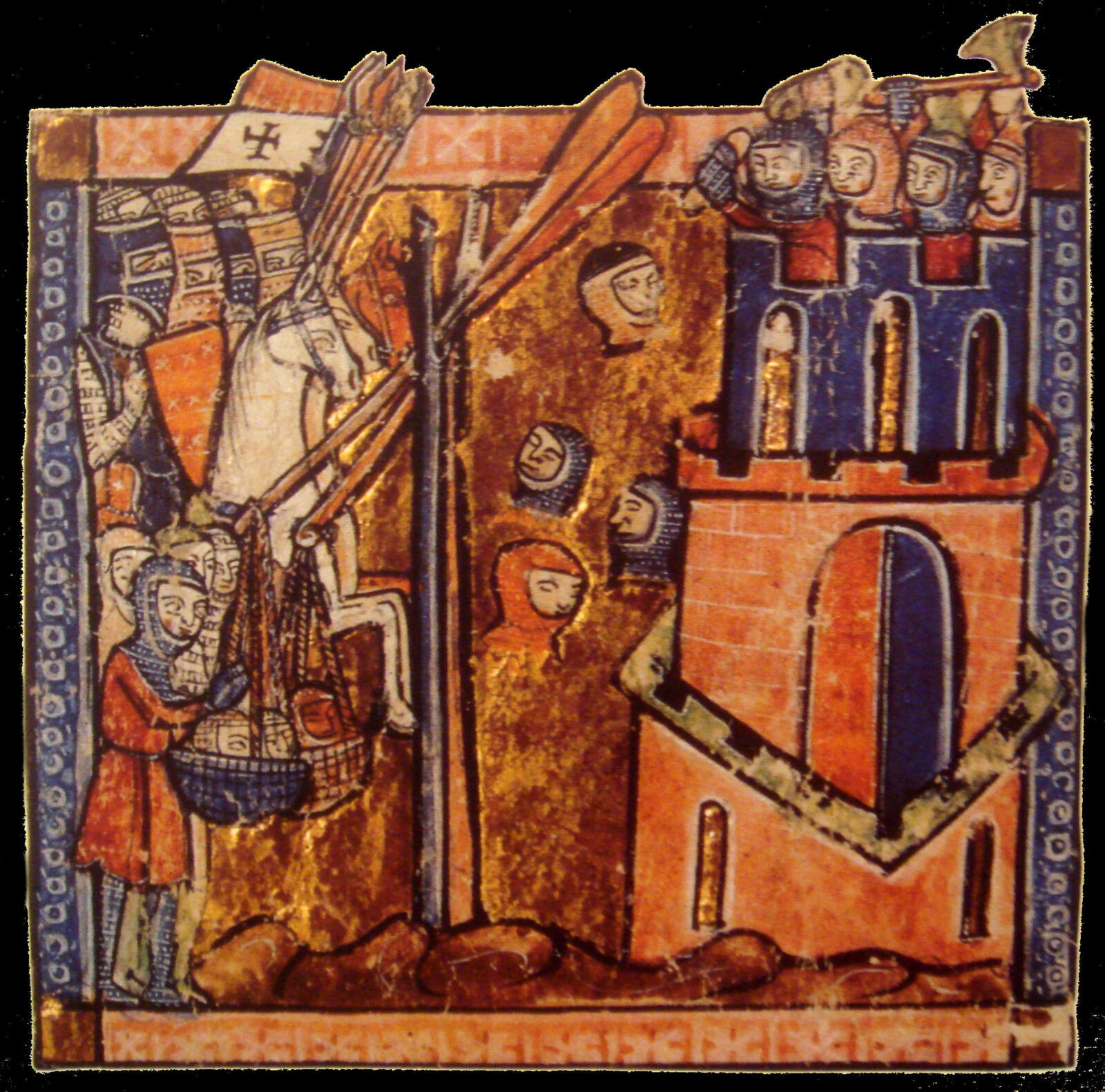 CONFERENCES: Count Hugh of Troyes and the Crusading Nexus of Champagne
CONFERENCES: Count Hugh of Troyes and the Crusading Nexus of Champagne
This week, I attended the first of several papers about the Crusades at the Institute of Historical Research at the University of London. This week’s paper was a bit different as it was handed out prior to the session. This seminar featured three panelists, paper author, James Doherty (Lancaster University), and review panelists, Professor Marcus Bull (University of North Carolina, Chapel Hill), and Simon Parsons (Royal Holloway, University of London).
This paper was a condensed version of the fourth chapter of Doherty’s dissertation. It examines armed pilgrimages. Doherty chose to scrutinise Count Hugh of Troyes because he was one of the most frequent pilgrims. He is an interesting person to use for a case study, as he started a pilgrimage tradition among the counts of Champagne. There is difficulty in undertaking this kind of study because one has to tackle the problem of Crusade definition. These pilgrims made overt connections of themselves as part of crusading rhetoric. Lords like Hugh were part of a larger crusading network during this period.
Bull commented that this paper is a good reminder of the value of case studies. There are methodological and theoretical challenges when looking at these crusaders but case studies are an excellent place to start. He was struck by the overarching crusader networks. Does our terminology adequately capture what was going on at this time and understanding people within such crusader groupings? We may need a richer vocabulary to capture that collective culture. The First Crusade changed the perception of power and prestige in society. Bull was also struck by the impact the Crusades had on society as a whole, and noted that as historians, we need to pay attention to the greater European dimension. We can’t look at European events and events in the Crusader states as separate entities. Bull was pleased to see a paper that takes visual language seriously. Non-written evidence is much more difficult to read but very important to historiography nonetheless.
Parsons took a more critical angle on Doherty’s paper and offered different perspectives on motivations for crusading. Hugh had an appreciation of his family’s involvement in the Crusades. It would be prudent to look at Hugh’s relationship to the King Philip I of France in further detail as his first wife, Constance, was the King’s daughter. His first wife, Constance, appears in sixty-three of his charters between 1095-1103 and then she suddenly drops out of mention in 1104. In the charters, he always related her to the King of France to cement his royal connection. Hugh’s reputation is damaged after the marriage to Constance fails and she asked for an annulment and was granted divorce in 1104. After this disaster, Hugh must have felt Crusading was a remedy to his ailing reputation. Hugh used crusading as his theatre of power and prestige. This paper provides a sophisticated view of a family that was very involved in the Crusades and while figuring out why lords went on crusade remains difficult, this dissertation makes a good contribution to the area of Crusade study.
Please support your fellow historians by attending sessions like this one and sharing these great topics.
~Sandra Alvarez


This week, I attended the first of several papers about the Crusades at the Institute of Historical Research at the University of London. This week’s paper was a bit different as it was handed out prior to the session. This seminar featured three panelists, paper author, James Doherty (Lancaster University), and review panelists, Professor Marcus Bull (University of North Carolina, Chapel Hill), and Simon Parsons (Royal Holloway, University of London).
This paper was a condensed version of the fourth chapter of Doherty’s dissertation. It examines armed pilgrimages. Doherty chose to scrutinise Count Hugh of Troyes because he was one of the most frequent pilgrims. He is an interesting person to use for a case study, as he started a pilgrimage tradition among the counts of Champagne. There is difficulty in undertaking this kind of study because one has to tackle the problem of Crusade definition. These pilgrims made overt connections of themselves as part of crusading rhetoric. Lords like Hugh were part of a larger crusading network during this period.
Bull commented that this paper is a good reminder of the value of case studies. There are methodological and theoretical challenges when looking at these crusaders but case studies are an excellent place to start. He was struck by the overarching crusader networks. Does our terminology adequately capture what was going on at this time and understanding people within such crusader groupings? We may need a richer vocabulary to capture that collective culture. The First Crusade changed the perception of power and prestige in society. Bull was also struck by the impact the Crusades had on society as a whole, and noted that as historians, we need to pay attention to the greater European dimension. We can’t look at European events and events in the Crusader states as separate entities. Bull was pleased to see a paper that takes visual language seriously. Non-written evidence is much more difficult to read but very important to historiography nonetheless.
Parsons took a more critical angle on Doherty’s paper and offered different perspectives on motivations for crusading. Hugh had an appreciation of his family’s involvement in the Crusades. It would be prudent to look at Hugh’s relationship to the King Philip I of France in further detail as his first wife, Constance, was the King’s daughter. His first wife, Constance, appears in sixty-three of his charters between 1095-1103 and then she suddenly drops out of mention in 1104. In the charters, he always related her to the King of France to cement his royal connection. Hugh’s reputation is damaged after the marriage to Constance fails and she asked for an annulment and was granted divorce in 1104. After this disaster, Hugh must have felt Crusading was a remedy to his ailing reputation. Hugh used crusading as his theatre of power and prestige. This paper provides a sophisticated view of a family that was very involved in the Crusades and while figuring out why lords went on crusade remains difficult, this dissertation makes a good contribution to the area of Crusade study.
Stay tuned for the next paper in this series, The Chronicle of Amadi: A Problematic Narrative, to be presented on June 16th.
Please support your fellow historians by attending sessions like this one and sharing these great topics.
~Sandra Alvarez
Follow the Institute of Historical Research on Twitter: @ihr_history
Like the Institute of Historical Research on Facebook: Institute of Historical Research: IHR Digital
Follow us on Twitter: @Medievalists
Like us on Facebook: Medievalists.net
Subscribe to Medievalverse
Related Posts